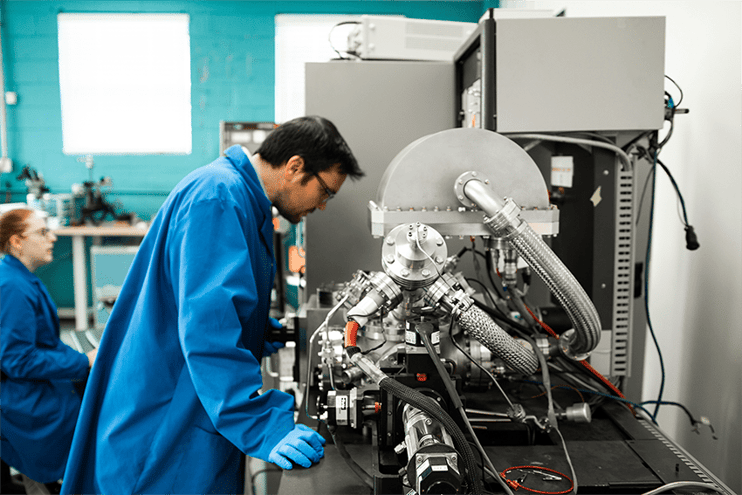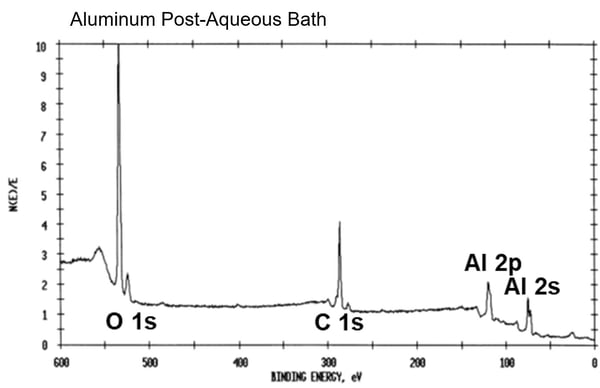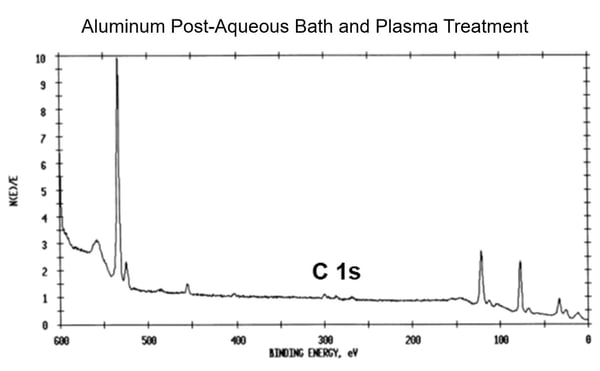Manufacturers utilize research and design laboratories all the time. To scale new products up to the production line, years of toiling in testing labs are done to ensure that everything goes off without a hitch once production starts.
There are some areas crucial to adhesion processes that these R&D labs may miss, however. These gaps are places where a specialized Surface Science laboratory can fill in to either prevent adhesion failure from occurring or to do root cause analysis to determine the source of failure and develop solutions.
Most manufacturers do not have in-house laboratories that can do this kind of analysis as it relates to surface chemistry and adhesion processes. They often have to look outside their own company for this expertise. Outsourcing this testing can be the absolute best way to understand how to control and monitor adhesion in production processes.
What Can a Surface Science Lab Do For You?
A high-quality surface science laboratory offers many analytic services and process optimization tools. These services and tools, when boiled down to exactly what value they offer manufacturers, provide the following things:
- Determine what good adhesion and surface quality look like in your specific process
- Develop appropriate tests to gather data through the use of highly sophisticated surface chemical analysis equipment
- Provide accurate interpretation of data through experience and deep knowledge of material systems
- Partner with you to translate data into actionable steps in the form of a roadmap to meet goals
What Surface Quality Specification Do I Need?
Asking what surface quality spec is needed is a great place to start because it begs another question: what are my adhesion performance requirements? The final product needs to stay assembled, stay coated, evenly coated, retain its ink or paint, stay sealed, etc. With that in mind, a surface lab can apply a quantifiable quality measurement to the material surface that lets manufacturers know that when they achieve that number, they will have successful adhesion.
In order to determine exactly what that number should be, the lab conducts a series of tests using a quantitative method, such as water contact angle, to measure the surface in scenarios as close to real-world production.
Rethink your adhesion manufacturing processes with Surface Intelligence.
There are places throughout every adhesion process where the surface of materials has an opportunity to change. These places are called Critical Control Points. Every time a surface is altered intentionally or not, for better or for worse, the surface needs to be measured and understood. When this analysis is done in a surface science laboratory, it can be easily determined if these changes are getting the surface closer to being fully prepared for adhesion or moving it further from that point. Once this is understood, the lab can help direct steps that need to be taken to either prevent or achieve these changes. As the lab replicates the steps and conditions the material surface goes through in the production, the scientists measure the surface and track the changes in the water contact angle. By scrutinizing those changes, the lab can determine why the changes occurred (e.g. time spent in storage, parts arrived out of spec for cleanliness, parts were cleaned or treated, etc.) and whether those changes are good or bad.
What Surface Analysis Equipment is Used?
Surface science laboratories employ several surface chemical analysis instruments in order to understand the molecular condition of the material surface. Adhesion is fundamentally a chemical reaction between a surface and what it is being bonded to. This reaction occurs at the top few molecular layers of the surface, so the equipment used to evaluate surface conditions needs to be sensitive to that kind of minutiae.
Common equipment used in surface science analysis are:
FTIR (Fourier transform infrared spectroscopy)
FTIR is a technology that provides detailed information about the molecular structure of substances. For this test, the sample is exposed to different wavelengths of infrared light, and the instrument measures which wavelengths are absorbed. This reveals what specific compounds, such as polymers, silicone, and other contaminants, are present. FTIR identifies functional groups (chemical compounds amenable to adhesion) created or exposed by surface treatment and provides a more specific blueprint of surface composition. Additionally, this can be used to determine the relative thickness of a coating or contaminant.
XPS (X-ray photoelectron spectroscopy)
XPS is a testing method that determines the chemical composition of the uppermost 50-100 Å, or 1-2 top molecular layers of material. By irradiating a surface with X-rays, the XPS test then determines the kinetic energy of ejected photoelectrons which reveals the percentage amounts of the elements present on the surface. This detailed analysis provides sensitive information about the chemical state of the surface region that directly affects the performance of surface engineering processes.
The use of these tools allows surface scientists to understand, in extreme molecular detail, what happens when the contact angle changes during aging or after cleaning or treatment.
Who Are the Surface Scientists?
High-quality surface laboratories should be made up of scientists with a depth and breadth of knowledge of not only surface chemistry but also manufacturing processes themselves.
Relying on experience and scientific expertise, these laboratories have the know-how to interpret data like the FTIR read out below:
Each peak represents a different element or compound found on the surface of the material. In the first chart, which shows the results of a test done after an aluminum surface was cleaned in an aqueous bath, the middle peak is indicative of carbon found on the surface which can be detrimental to adhesion. In the second chart, taken after the aluminum went through an aqueous bath and then subsequent plasma treatment, shows that the carbon has been dramatically reduced.
Being able to come to these conclusions requires scientific prowess and can lead to powerful changes to production processes to eliminate adhesion issues.
Beyond the Lab
Surface science laboratories can perform tests all day long, but if the data does not translate into real-world adhesion problem fixes, then what good are they? A high-quality surface lab will not only run tests that are directly correlative to the environment and methods used in production but will help devise ways for technicians and engineers to do ongoing monitoring and validation. When a new process is implemented, it must be observed carefully to see A) if it’s working and B) if things are drifting away from this new standard.
Revolutionize Your Manufacturing with Surface Quality Inspection Technology.
There should be testing equipment used in the lab that can also be used on the production line. The devices used to get water contact angle measurements in the lab should be easy to use and portable or automated in order to seamlessly transition to the manufacturing floor. These devices can be used to verify adhesion process operations and inspect surface quality at every Critical Control Point.
Surface scientists should offer a roadmap for where to go next and how to make sure the test results translate into process controls. Manufacturers shouldn’t just be handed a graph and told, “Good luck.” Surface scientists need to fully understand the manufacturer’s application so they can provide actionable items to take the knowledge discovered in the lab into production.
For more insight into the necessity of process monitoring and Critical Control Point inspection, download the “Predictable Adhesion in Manufacturing Through Process Verification” eBook.




